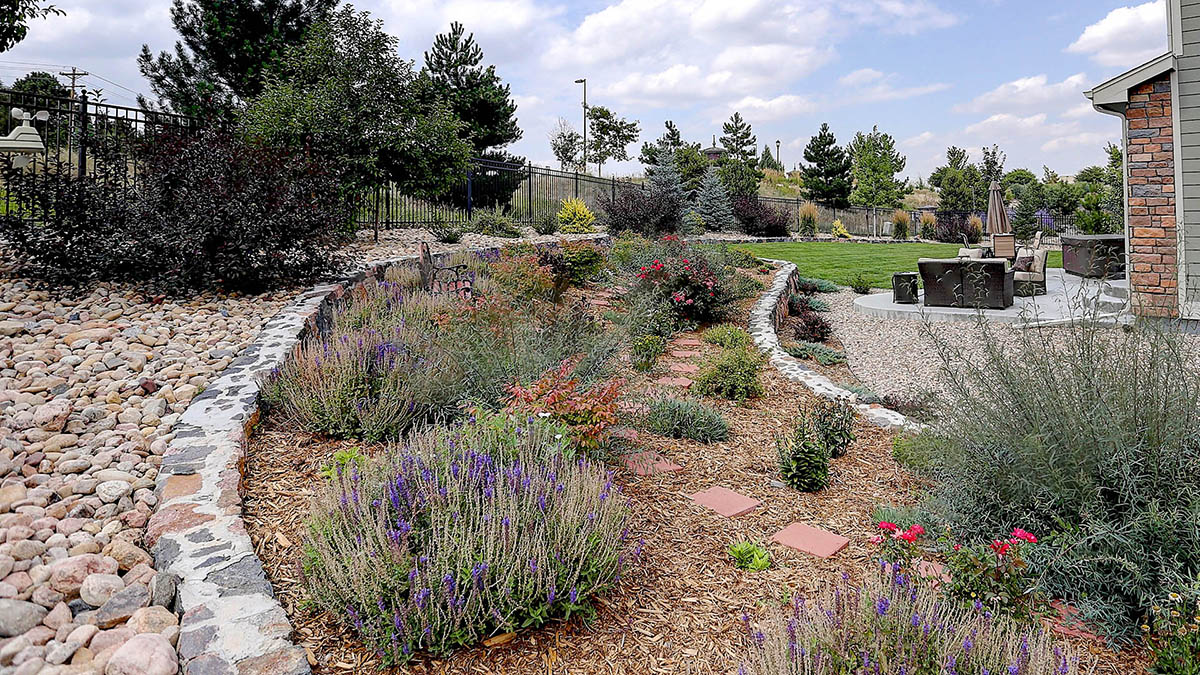Activity Areas
Add activity areas into your water efficient landscape to break up the space and create interactive areas for people of all ages. For families with children, add a play set or natural climbing area. Other great ideas include raised garden beds, relaxation or meditation areas.
Natural Paths
Avoid using grass paths because watering the turf will never result in successful growth. Concrete, pavers, breeze and flagstone paths use zero water and add various textures to your landscape.
Garden Beds
Add garden beds to create non-functional turf areas that add interest to your landscape. When designing planting beds, check the mature height and width of selected plants. It can be tempting to place plants close together to achieve a full look, however, this may lead to overcrowding and additional maintenance. Plant tags will provide the plant’s size at maturity, light and water requirements.
Better yet, plan out your plant selections before heading to the nursery. Use local organizations such as Colorado State University Extension, Plant Select, CO Native Plant Society and Wild Ones Front Range chapter to find plants that grow well in your area. To get inspiration for your landscape, visit Northern Water’s Conservation Campus.
Landscape Coverage and Plant Selection
Remember to have adequate plant cover to cool landscapes. Northern Water recommends a minimum of 50 percent plant coverage at maturity to provide adequate cooling for your property. Planting beds should include these plant elements:
- Plant trees first and place them where they can provide shade in the summer and will allow sunlight through in winter.
- Shrubs provide structure during winter months and can add interest through various foliage colors.
- Grasses provide movement and texture and are relatively low maintenance.
- Perennials add bursts of color and food for pollinators.
- Groundcovers can act as a living mulch and need little to no maintenance.
- Bulbs provide an early burst of color and require little maintenance. They are very water-wise since they use winter snow as a moisture source.
With a landscape design in mind, plan to include plants with complementary or contrasting colors. Also think about including various textures, like fine textures of grasses and leaf textures from shrubs, such as Fernbush, Apache Plume and Leadplant.
Additional planting tips:
- Cluster plants of the same species in odd numbers: groups of threes, fives or seven.
- Use shrubs along corners (house or fence) to soften the edges.
- Layer plants tallest in the back, lowest in the front. This not only provides some organization for your garden, but layers also provide more benefits for birds and pollinators.
- Choose plants with varying bloom times to provide something of interest in your garden for every season. Be sure to include evergreens and/or broadleaf evergreens to keep structure in your garden in the winter months.
- Right plant, right place. Research plants that thrive in the various micro-climates of your yard. The south side of your home will likely get a different plant pallet than the north side.
- Have a plan in place to irrigate your garden beds appropriately. Group plants together that have similar water and light needs.
- Whether you use wood mulch, or an inorganic mulch (rock or squeegee), be generous. Use 3 to 4 inches of mulch to suppress weeds and retain moisture.

